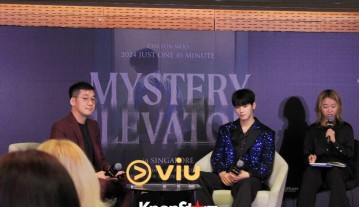Perseid Meteor Shower 2013 Will Peak at About 90 Meteors an Hour This Month; Fireball Parties Are Forming
The Perseid meteor shower is a major annual event for skywatchers and 2013 looks to be a great show. Meteorologists say the moon will set before midnight on the peak nights of the Perseid meteor shower.
The Perseid meteor shower occurs in the middle of August every year. The Perseid meteor shower is caused by the intersection of Earth intersects with the orbit of the Swift-Tuttle comet. Particles comet dust slam into the earth's atmosphere at 132,000 mph. The bits they burn up and create light streaks across the night sky causing the Perseid meteor show. The Swift-Tuttle Comet is a periodic comet with an orbit that takes about 130 years. Swift-Tuttle is a fairly large comet. It has a nucleus of approximately 16 miles across. The Swift-Tuttle Comet was discovered in 1862 by Lewis Swift and Horace Tuttle two skywatchers who spotted it in independent viewings. Tsuruhiko Kiuchi saw the comet in 1992. The Swift-Tuttle comet is expected to return again around 2122. Although the Swift-Tuttle comet won’t be seen again in our lifetimes, it is the parent body to the Perseid meteor shower that occurs every August.
The Perseids are considered “fireballs.” Fireballs are especially bright meteors that shine brighter than Jupiter or Venus in the night sky. Bill Cooke who heads up NASA's Meteoroid Environment Office said that the Perseids are the fireball champion of annual meteor showers. He said "We have found that one meteor shower produces more fireballs than any other. It's the Perseid meteor shower, which peaks on Aug. 12 and 13." Cooke added "Comet Swift-Tuttle has a huge nucleus -- about 26 km in diameter. Most other comets are much smaller, with nuclei only a few kilometers across. As a result, Comet Swift-Tuttle produces a large number of meteoroids, many of which are large enough to produce fireballs."
The Royal Astronomical Society of Canada Observer’s Handbook predicts about 90 meteors an hour at the Perseids meteor shower’s peak. But even the most diligent skywatchers will only catch a small portion of that many meteors in the Persieids meteor shower.
The Mojave Desert Land Trust will benefit from the Perseid meteor shower when a party that is being assembled to watch the sky will be thrown on Saturday, Aug. 10, at the Integratron in Landers, California. The party starts at 7 p.m. and runs until midnight.
The Perseid meteor shower is one of the best meteor showers of the year. Sometimes fifty meteors per hour can be seen. The Southern California Desert Video Astronomers will project live images from deep-space telescopes onto the side of the Integratron building. The astronomers will use a state-of-the-art projection system. Another festival of lights, The Night Sky Festival, is a public astronomy event for all ages, that will also be celebrated on Aug. 10 8 p.m.-1 a.m. on Aug. 10 in Richland, Calif. Festival-goers can watch Perseid meteors and use hosted telescopes to glimpse planets, stars, star clusters and galaxies.
The debris field begins to be visible on July 17 and will leave the field on Aug. 24. Perseid meteors can be seen any night during this period. The best time to see the Perseid meteor shower is after midnight, with the very best time being one to two hours before dawn. By the first week in August, you may see as many as six to eight meteors per hour. The rate increases to a predicted peak between Aug. 12 and 13 when as many as 90 shooting stars can be seen per hour.
by Tony Sokol
















